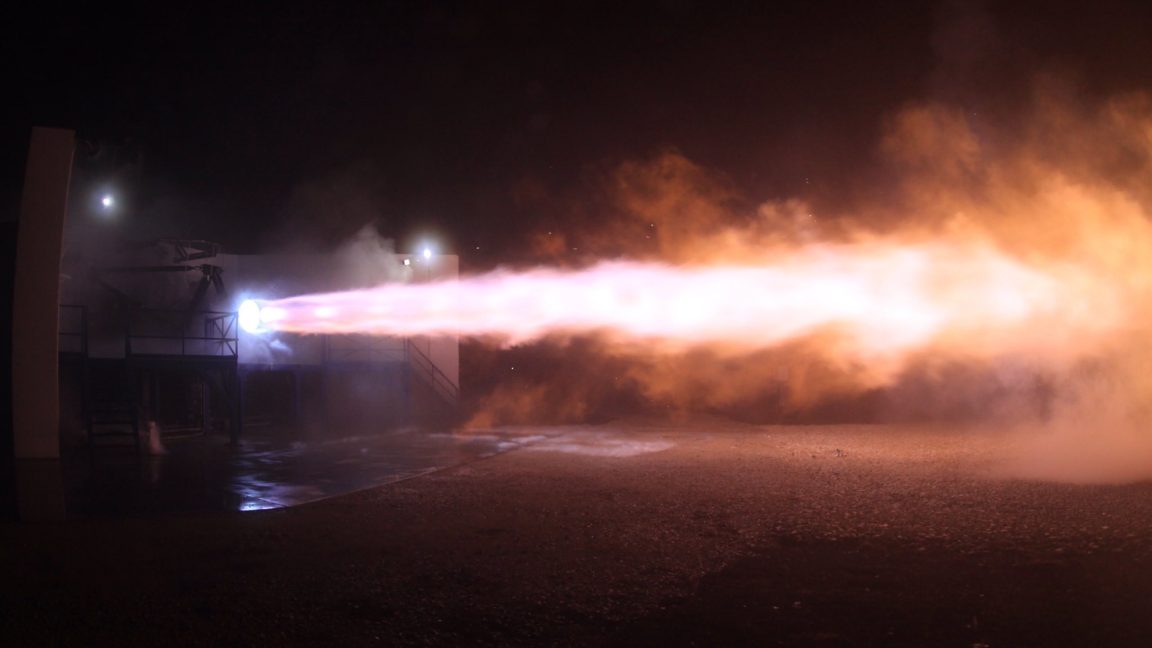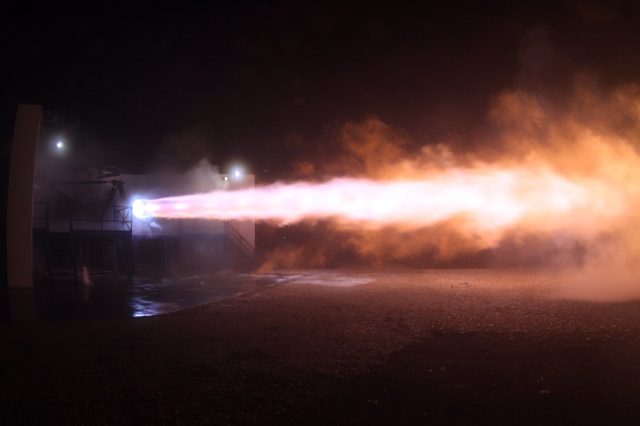SpaceX founder Elon Musk continued to drop tidbits about his "Interplanetary Transport System" on Twitter early Monday morning, sharing two photos of SpaceX's Raptor engine during a test fire at the company's facility in MacGregor, Texas. "SpaceX propulsion just achieved first firing of the Raptor interplanetary transport engine," he tweeted.
Musk released the photos on the eve of a much-anticipated speech Tuesday at the International Astronautical Congress, in Guadalajara, Mexico. During his speech, Musk will lay out the elements of his vision for humanity to colonize other worlds. As Ars has reported, Musk will likely offer an inclusive message, reaching out to potential partners. This is because SpaceX cannot self-fund colonization and will need help from the government and industry.
In subsequent tweets early on Monday, Musk provided a few details about the Raptor engine, which he said has a thrust of about 3 million Newtons in the upper atmosphere. This is about three times more powerful than the company's existing engine, the Merlin 1-D, nine of which power SpaceX's Falcon 9 rocket. Additionally, with these specs, the Raptor would be slightly more powerful than a space shuttle main engine and in the same class as Blue Origin's BE-4 rocket engine, which has not yet undergone a full-scale test.







 Loading comments...
Loading comments...
